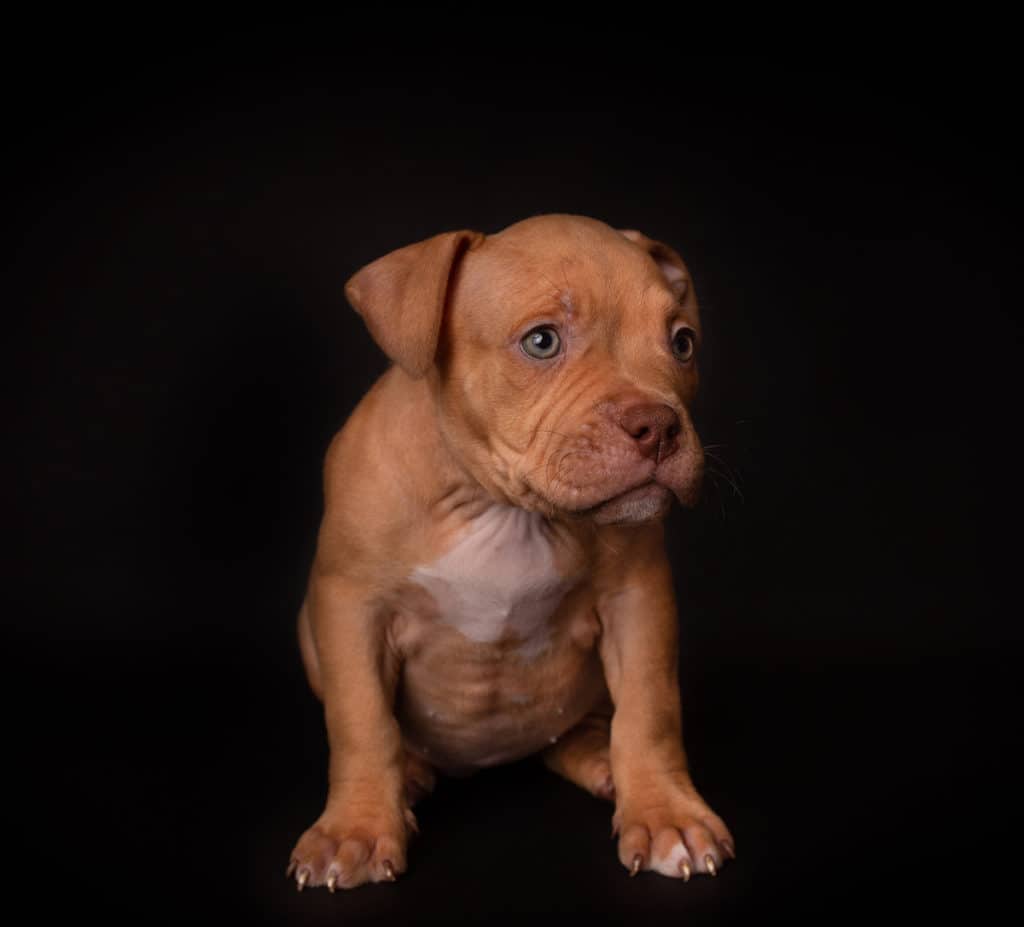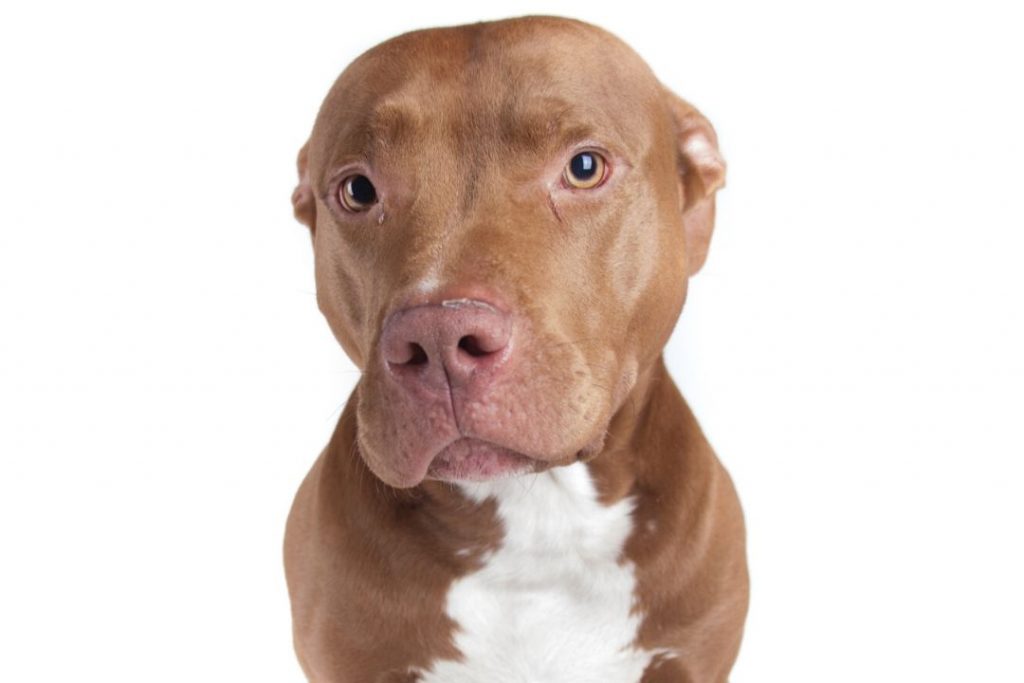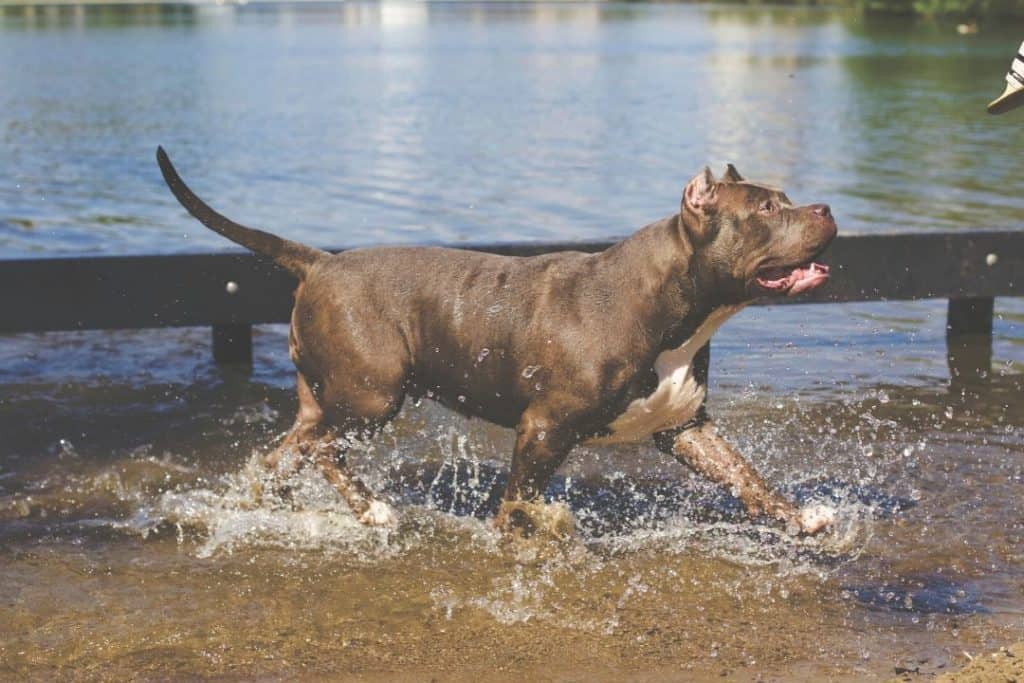This article may contain affiliate links, and I will be compensated if you make a purchase after clicking on my links (at no additional cost to you)
When getting an American Pitbull, a small dog is the last thing you think of getting.
After all, Pitbulls are supposed to be tough, athletic, incredibly strong, not small. Fortunately, there are plenty of explanations for why your American Pitbull is rather small, and some of them, although not all, have solutions.
Why is your american pitbull so small?
Your American Pitbull could be small for various reasons, including issues related to malnutrition. However, the most common cause is that your dog is simply genetically small or a mixed breed.
In the rest of this article, I’ll go over malnutrition and how to correct it, the history of mixing within the Pitbull breed, and how that can lead to smaller than average dogs.
Things To Know About Why Your Pitbull Is So Small
American Pitbulls are generally thought of as larger than average dogs. However, they don’t always have to be.
If your dog was malnourished, had small parents, or is a mixed breed, then it may end up being smaller than average. Malnourishment can be corrected if caught early enough. But if your American Pitbull is genetically small, there’s very little you can do.
1. Your Dog Is/Was Malnourished
One of the main causes of a small dog is malnourishment. Malnourishment can be caused by a lack of food, incorrect food, or parasites that prevent your dog from absorbing adequate nutrition. If the growth stage for your dog has already passed, there’s little you can do to correct this.
If you purchased or adopted your American Pitbull as a puppy and noticed that it seems undersized or like it’s not growing quickly enough, the first thing you should do is take your puppy to the vet. The vet will examine your puppy, run some tests, and let you know what’s going on.
The most common reason a puppy is undersized is malnutrition, typically from parasites. Parasites attack your dog’s gastrointestinal system and can damage it to the point where it’s unable to absorb adequate nutrients no matter how much your dog eats.
If you take your dog to the vet, they can run tests to see if there are any parasites or other ailments present that could be causing the malnutrition. Then, if that’s the issue, they’ll be able to prescribe the appropriate medication to help your dog recover.
If your dog is in its first year of life, especially before six months of age, there’s a good chance that with high-quality food and plenty of it you’ll be able to reduce most of the damage. Unfortunately, once you’re past that point and your dog is done growing, there isn’t much you can do to correct it.
You may just have a small dog at that point. But don’t worry. There are worse things in the world than a small dog. As long as your dog gets adequate nutrition as an adult, it should be perfectly healthy and happy, even if it’s a little shorter than it would’ve been.
2. Your American Pitbull Is Just Plain Small
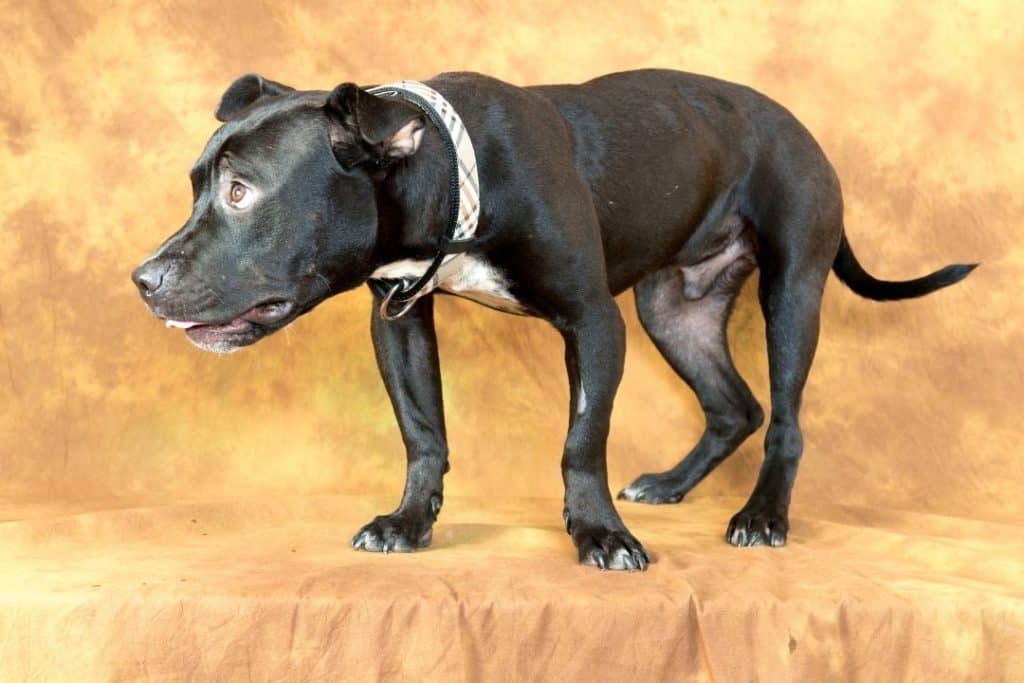
Sometimes in a litter of puppies, you’ll have one puppy referred to as the runt. It simply means it’s smaller or weaker than the other puppies, especially in larger litters. Various factors play into this, including one thing we can’t control: genetics.
There can be a huge variation in the expressed genes, even among human families and siblings. One sibling can be well over 6 feet tall while the other can be below average; it all depends on which genes are transmitted from the parents.
Taking that into account, think about a litter of puppies. Of course, there will be quite a bit of variation among the puppies in many ways. You can have brindle, black, brown, white, and spotted puppies in the same litter from the same parents; the same goes for size. Sometimes puppies are born small or big, and that’s just the way they are—it’s in their genes. They may even be larger or smaller than their parents.
If your puppy is simply genetically small, there’s nothing you can do to change that. You can’t change the DNA instructions that have been laid out telling your puppy how big to grow.
At least you can rest assured that there are no additional health risks with genetic smallness unless your puppy is suffering from dwarfism, which is an entirely different condition that has very little to do with just being small. If you’re determined to have a large American Pitbull, you have two options:
- Adopt a fully grown dog. That way, you know for sure what you’re getting, and you won’t risk getting a dog you don’t want.
- Choose to buy a puppy from a litter whose parents are on the larger end of the appropriate size for the breed. You may still end up with a small puppy, but the chances are a lot lower if both parents are larger than average.
3. Your American Pitbull Is Not a Pure Breed
American Pitbull Terriers are officially recognized by the ABKC or American Bully Kennel Club and the UKC or United Kennel Club. They have a breed standard that details many requirements, including size. However, most of the American Pitbulls you meet aren’t a purebred example of the breed, impacting their size.
American Pitbulls were originally bred as a mix of several other “bully breeds” to create the ultimate dog athlete. Although they’re still not officially recognized by the AKC, the breed eventually became so popular the ABKC and the UKC now recognize them.
The United Kennel Club has created a breed standard that details precisely what an American Pitbull should look like and approximately what size it should be.
According to the UKC standard, a male American Pitbull should weigh approximately 35–60 lb. and stand 18–21 inches (46–53 cm) at the withers. A female should weigh around 30–50 lb. and stand 17–20 inches (43–51 cm) at the withers.
So there are very specific requirements that an American Pitbull should meet. Now you may be thinking, “I’ve seen Pitbulls a lot bigger than that,” and you’re right, you probably have. That’s where it starts to get interesting.
Pitbulls were historically a mixed breed and only began to be officially recognized recently. So, if you meet a dog that looks like a Pitbull, that’s what it’ll be categorized as.
You might have encountered some massive Pitbulls, and the owner claimed they were a Pitbull, but they had some mastiff mixed in. Just as mixing can create exceptionally large Pitbull-like dogs, it can also create very small ones.
If you take your Pitbull puppy home, it’s completely healthy, and it still ends up being quite a bit smaller than the breed standard; you’re probably dealing with a mixed puppy. There’s no issue with this. As a matter of fact, mixed breeds tend to deal with fewer health issues.
However, it can be quite disappointing if you were looking for a true American Pitbull. If you want a true Pitbull and a mix just won’t cut it, then you’ll want to find a breeder that is registered with the ABKC.
Final Thoughts
Your American Pitbull is so small because it’s likely malnourished or naturally born to be the runt of the litter. Perhaps your American Pitbull is mixed with a smaller breed, or it could just genetically be a smaller American Pitbull. Your local vet can explain why your dog’s so small.
Most American Pitbulls kept as pets are actually a mixed breed, and because of that, they can vary greatly in size from one example to another. The only way to ensure you have a true American Pitbull is by purchasing a puppy from an ABKC-registered breeder.
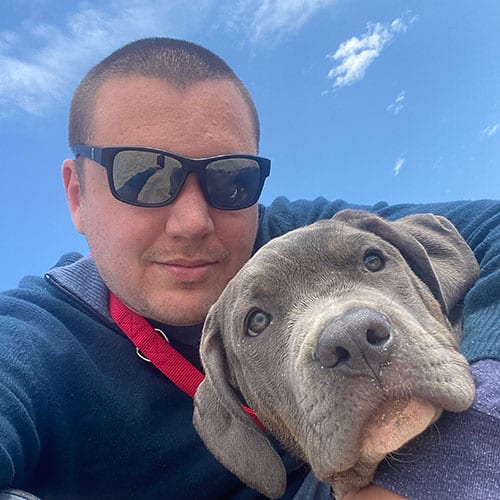
I created this blog to share my passion for bullies, and help current and future pitbull owners with things like diet and education.
Hope you find it useful, don’t hesitate to drop a comment on my articles!

